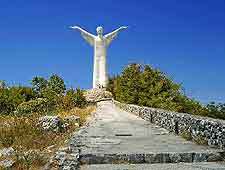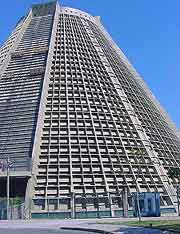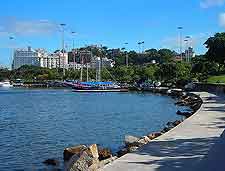Rio de Janeiro History Facts and Timeline
(Rio de Janeiro, Brazil)

By the start of the 16th century, life around Guanabara Bay had remained the same for centuries for the native Botucudo, the Maxakali, the Puri and the Tupi tribes that lived here. Then on January 1st, in the year of 1502, a Portuguese fleet landed and changed the history of the 'January River', or Rio de Janeiro, forever.
At many strategic points on Brazil's South Atlantic coast at the time, the French and Portuguese vied for influence. French naval officer Nicolas Durand de Villegaignon built the first major stronghold here in 1555 in the shape of Fort Coligny, which was populated with several hundred French migrants as part of the France Antarctique colony.
The Portuguese Takeover
French influence faded fast, however. The Portuguese were rapidly gaining control of the expanding territory that was to become known as Brazil, and soon arrived here, destroying the fortress in 1560, just five years after it was first built. The history of present-day Rio de Janeiro soon began to take shape following the establishment, a few years later, of the city of Sao Sebastiao do Rio de Janeiro. Named in honour of Saint Sebastian, the patron of the then monarch of
Portugal, the city at this time was confined to the area known today as Villegagnon Island, which is located near the mouth of the estuary and is now home of the Brazilian Naval School.
Capital of the Colony
From a small port routinely ransacked by pirates, primarily from
France, the city began its meteoric rise in the late 17th century during the gold rush, a period that defined Rio de Janeiro's history. Positioned on the coast and next to the heartland of the colonial minerals industry in Minas Gerais, Rio de Janeiro took over from
Salvador further north as the main port for exporting riches back to Portugal. As such, the colonists made it their administrative capital in 1763.

Capital of Portugal
Just under 50 years later, Rio de Janeiro had become the centre of the Portuguese Empire, at the time the largest on the planet, following Napoleon's invasion of the country in 1808. This was the high point of Rio's turbulent history - it had effectively become the centre of the world. The hordes of arriving noblemen swelled the ranks of the city and in turn they brought with them many thousands of slaves, whose numbers within the state reached nearly a quarter of a million by 1840.
Independence and Expansion
When Portugal's Prince Pedro I finally declared Brazilian independence in the year of 1822, there was only one natural choice for the capital city of the country, Rio de Janeiro, and it remained so when Brazil became a republic in 1889. During this period, the city was somewhat confined by geography to the area in and around Guanabara Bay. However, by the start of the 20th century, technology led to expansion.
The first tunnel was constructed through the mountains separating Botafogo and Copacabana, the latter of which is best known for its famous beach and Copacabana Palace Hotel, the best in all of the Americas during the 1930s. The earliest tram system, built in the first decade of the 20th century, prompted expansion to the south and north as Rio de Janeiro became a by-word for recreation in the sun. In 1931, the Catholic Circle of Rio completed construction of the city's most iconic image, the elevated Art Deco Christ the Redeemer statue in the adjacent Tijuca Forest.

The Capital Moves Inland
When presidential hopeful Juscelino Kubitschek de Oliveira announced, ahead of the 1955 election, that he would construct a purpose-built capital in the middle of the country, few thought he would actually keep his word when he was elected. However, in 1960, Rio de Janeiro was stripped of its position as the main administrative centre for the first time in nearly 200 years.
Brasilia was born, but Rio de Janeiro has until this day remained Brazil's main city, a position that was cemented when it was chosen to stage the final of the FIFA World Cup in 2014 and as host of the Olympic Games in 2016.
 By the start of the 16th century, life around Guanabara Bay had remained the same for centuries for the native Botucudo, the Maxakali, the Puri and the Tupi tribes that lived here. Then on January 1st, in the year of 1502, a Portuguese fleet landed and changed the history of the 'January River', or Rio de Janeiro, forever.
By the start of the 16th century, life around Guanabara Bay had remained the same for centuries for the native Botucudo, the Maxakali, the Puri and the Tupi tribes that lived here. Then on January 1st, in the year of 1502, a Portuguese fleet landed and changed the history of the 'January River', or Rio de Janeiro, forever.
